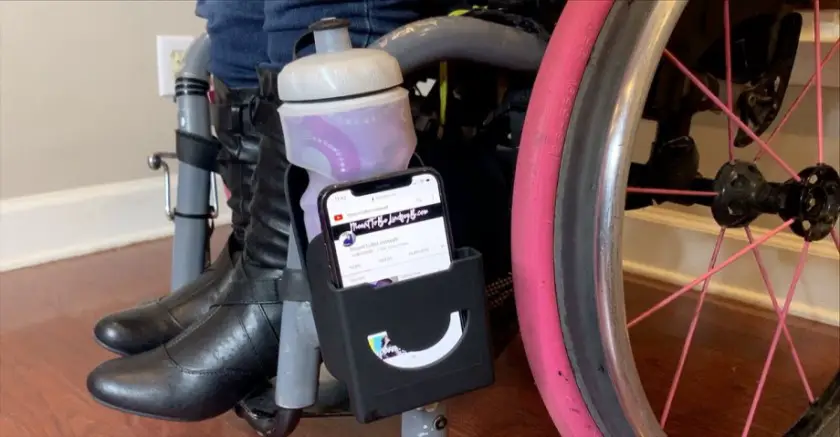The US Equal Employment Opportunity Commission requires that federal contractors invite potential employees to self-identify their disability on the application.
The form must be filled out annually by new hires and applicants for federal contracts and completed by the employee if they wish to remain employed by the contractor.
The disclosure is voluntary and the employer must state that they will use the information for affirmative action purposes.
This article will cover everything you need to know about the voluntary self-identification of disability to support the video the government provided to explain the purpose of the new forms.
Table of Contents
- What is Voluntary Self Identification of Disability?
- Who Should Fill Out the Voluntary Self Identification of Disability?
- How to Fill Out the Voluntary Self Identification of Disability
- What is Considered a Disability?
What is Voluntary Self Identification of Disability?
The Office of Management and Budget (OMB) has approved the use of a revised version of the Voluntary Self-Identification of Disability form, also known as Form CC-305.
The new version is designed to improve the user experience, increase response rates, and prevent discrimination and harassment of employees and applicants who report their disability.
This form gathers information on how many people in a company have a disability and whether they are employed full-time or part-time. It is also used to help federal contractors report their data on whether they have a disability.
The University of Louisiana at Lafayette developed a form to survey its workforce. This form is called the “Voluntary Self-identification of Disability Form,” commonly used as a pre-offer disability survey.
As a federal contractor, the university must maintain and analyze information about their employees with disabilities to meet the requirements of Executive Order 11246.
The form must be filled out by the employee to prove that they are disabled. It is a legal requirement for employers to use this form. As a federal contractor, the university must collect the information from applicants for federal contracts.
However, the information is not used by the contractor and the data will be kept separately from personnel files.
In all, this information is crucial for accurate recordkeeping. It is OMB-approved, so it can be used by all employers. It is user-friendly and customizable for employers, enabling them to customize it for their own business needs.
Related: How Disability Insurance Investigators Investigate (Explained)
Who Should Fill Out the Voluntary Self Identification of Disability?

This document is intended for individuals with disabilities applying for federal contracts.
The form is confidential and does not affect the applicant’s eligibility for employment; the information will be analyzed and reported in a manner consistent with the law.
The data will not be used for affirmative action because the purpose of the form is to measure progress in hiring people with disabilities and allocate resources for them. The guide should be read by employers and job seekers alike.
The new voluntary self-identification form is an essential requirement for federal contractors. It is OMB-approved and aims to help contractors to provide flexible workplace policies for their employees.
They should include the information of employees who are not visible. The form is accessible to the general public and employees with disabilities. The purpose of the form is for employers to create an environment where disabled people feel comfortable.
If you have a disability and have recently received a conditional job offer, you should fill out the form.
As long as they consider your application and ensure you’ve reviewed the requirements for the position, you can still require a written diversity statement. This way, employers can create a positive image of the organization.
Related: How Many Hours Can You Work on a Disability Living Allowance? (Answered)
How to Fill Out the Voluntary Self Identification of Disability

You don’t need special assistants or agents to help you fill out the voluntary self identification of disability. Yes, you can get the form by yourself, fill it out, and submit it yourself. It’s really that simple.
Here’s a quick 3-step guide that explains the process.
Get the form
Visit the Human Resources and Equal Opportunity and Compliance or get it online. Don’t forget that the form is free and not compulsory. However, you should get the form and provide the correct information for the survey.
Fill the form
For the question “Do you have a disability”, you’re expected to click on the first answer (yes, I have a disability) in the options provided if you have a disability or a history of disability.
Several conditions are considered a disability as listed on the form. Make sure to check through them to select the right answer. Then, provide your full name.
Fill out the “Today’s date” box with the date you filled out the form and proceed to submit the form.
Submit the form
The next thing is to submit the form to the appropriate quarters. Consider summiting the form to the Human Resources and Equal Opportunity and Compliance or submit it online.
Related: How to Change Your Address with Social Security Disability
What is Considered a Disability?
As earlier mentioned, the voluntary self-identification of disability is intended for individuals with a disability, so it makes sense to mention some of the impairments considered a disability.
According to the law, a disability is a mental or physical impairment that limits a person’s ability to interact with the world, expecting to last for an extended period.
You should also know that some disabilities can be hidden and only known to the disabled person. This is why the voluntary self-identification of disability is a great initiative. Here are the popularly known disabilities.
Physical Impairment
This disability covers all noticeable impairments in mobility conditions like neuromuscular disorders, cardiovascular disorders, and musculoskeletal disorders. These conditions can result from illness, injury, accident, or inheritance.
They can also be in-born. So, you’re eligible to fill out the voluntary self-identification of disability if you have a physical impairment.
Vision Impairment
Cornea graft, scratched cornea, dry eyes, and many others are considered vision impairment. These conditions can result in ocular trauma and blindness, making it difficult for you to interact with people.
Hearing Impairments
Hearing impairments range from partial deafness to total damage of the auditory nerves. This condition can be in-born or caused by occurrences in the future. Hearing aids and sign language are the common assistive technology used in hearing impairments.
Psychological Disorder
Psychological disorder, also known as a mental health disorder, affects mood and feelings. It could be long-term or short-term, depending on the severity of the condition. However, all psychological disorder affects a person’s day-to-day activities significantly.
Spinal Cord and Head Injury
A spinal cord or head injury can range from mild to moderate and severe conditions. Regardless, it is considered a disability since it will affect sensory functioning.




